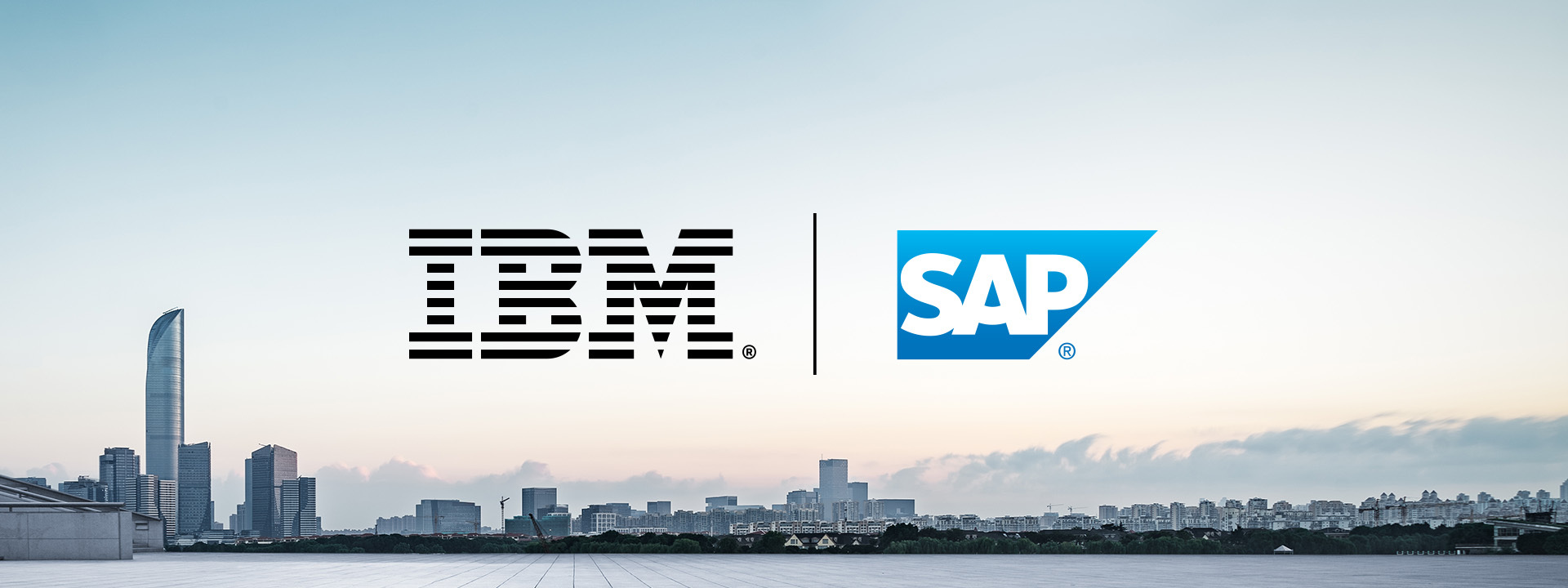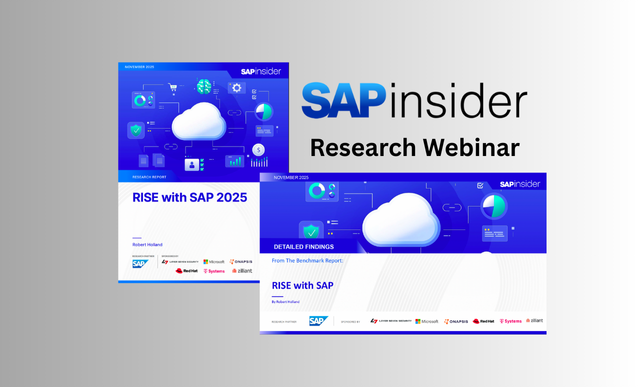After an Extraordinarily Disruptive Year, 2021 Is the Time to RISE
By Alice LaPlante, Contributing Writer, SAPinsider
When the pandemic hit in March of 2020, business leaders were already on digital journeys. A case in point: of the more than 600 senior executives at large global companies who participated in a late 2019 survey conducted by The Economist Intelligence Unit, 83% indicated that they intended to increase investments in digital technologies to achieve transformation in 2020. And they were exceedingly optimistic about what those investments would return: 74% expected profits to significantly increase through 2023 as a direct result of business transformation.
What they didn’t know, of course, is that the next 12 months would bring a global pandemic, a worldwide economic downturn, major disruption to their operational and production capabilities, and an organizational scramble to shutter offices and equip employees to work from home in the midst of radically altered markets. Not only would profitability be elusive, but for some, interrupted value chains and cash flows threatened their very survival.
Explore related questions
“Our customers are caught in this really deep quandary,” says Robin Manherz, Chief Performance Officer at SAP. “They have to transform their businesses faster than they ever thought would be necessary, but they’re facing a Catch 22 because they must maintain their existing operations while shifting to the cloud. This is a very difficult trade-off.”
The answer: RISE with SAP. The new subscription-based, concierge-inspired, digital-transformation-as-a-service offering is specifically designed to address this challenge, and to help companies gain agility and resiliency, and to focus on business outcomes to regain their footings and even thrive in the new normal.
Yes, such things have always been important. “But now they’re critical because we’ve experienced a really significant business disruption that nobody saw coming,” says Manherz, who says business transformation “fundamentals” haven’t changed. “They are just more real and more urgent.”
First Things First: Solving the Cash-flow Crisis
Even though companies have been under pressure to reduce capital expenditures for over a decade, prior to the pandemic many companies operated smoothly on recurring cash flows that allowed them to aggregate cash reserves. These predictable revenue streams gave them fairly liquid operations where they had sufficient cash to sustain large capital investments, such as in on-premise hardware and software.
All this changed in early 2020. A new kind of economy very swiftly emerged where moving capital expenses (CapEx) to operational expenses (OpEx) and liquidity became urgent. Now, with less predictable revenue streams and less cash on hand, it has become necessary to pay for business transformation as an operating expense.
This is where cloud resources make more sense than capital-intensive, on-premise ones.
For example, one of the industries hardest-hit by the pandemic, the airline industry, was able to defer costly capital outlays by moving applications and data to the cloud. One Latin American airline subscribed to RISE with SAP to enable this transformation of CapEx to OpEx by shifting from on-premise to the cloud and reducing the total cost of IT asset ownership with flexible quarterly subscription payments. In addition to surviving a difficult cash-flow situation, the airline is now in a position to exploit the scalability of cloud when normal business conditions return.
Easing the Transition To the Public Cloud
Another challenge many organizations are encountering when attempting a swift business transformation is that their processes are based on highly customized made-for-them-only IT environments.
These businesses are having to consider transitioning to business processes that eliminate or decrease the need for customization, and which instead can coexist in a much larger — and much more open — technology ecosystem.
The challenge is further complicated by the fact that most organizations have also integrated a plethora of proprietary applications into their IT environments. The result of having purchased different types of software products over time creates a complex web of technical debt.
The thought of going from this highly complex and customized environment directly to the public cloud and standardized components is exceedingly intimidating to many businesses. “It’s not just a question of flipping a switch,” says Manherz.
RISE with SAP can address these issues and more by moving businesses to private cloud instances where they retain their autonomy. They’re running in an environment where upgrades aren’t forced on them, but can be done at their own pace. And RISE with SAP provides them with all the business process integration tools, business process reports, and the business platform services they need to build customizations or integrations on the SAP Business Technology Platform. Their cloud-based apps and integrations will then be much easier for them to maintain over time.
This free tooling — which RISE with SAP also helps them use effectively — allows businesses to re-imagine their processes and move at a measured pace from their legacy customized environments to more agile, cloud-based ones.
“If there’s not an interim step in between those two environments, it’s too hard and too daunting,” says Manherz. “We want businesses to choose a speed they’re comfortable with. That way, businesses can be confident and stable in their abilities to sustain new approaches and new business models.”
Tapping Into a Global Partner Ecosystem
Today’s businesses must operate in a global political and macroeconomic environment that makes it difficult to operate across borders given the extreme varieties of operating and regulatory requirements in individual markets.
As a result, many global enterprises turned to hyperscalers to host their SAP on-premise instances locally, as hyperscalers tend to have sufficient data centers and resources around the world to comply with local regulations as well as scale as needed.
Now, with RISE with SAP, hyperscalers are on board as partners, allowing businesses to take full advantage of their scale, flexibility, and capabilities to conform to local regulations without the hassles of dealing with a broad range of different vendors. “You get the benefits of hyperscalers, but with one partner that is SAP,” says Manherz. “SAP has always had a vested interest in customers’ long-term success which has only grown stronger with RISE with SAP, and helping customers make the transition to the cloud.”
SAP’s relationships with hyperscalers represent just a fraction of the partner ecosystem that businesses tap into with RISE with SAP. “The global economy is now a networked economy,” says Manherz. “In fact, McKinsey has estimated that by 2025 the integrated network economy could represent $60 trillion in global revenue. And with RISE with SAP companies can make these supplier, logistics, and asset networks an intrinsic part of their IT environment’s configuration allowing businesses to achieve true digital transformation by extending it to their trading partners.”
For example, a railway company in Switzerland is using SAP’s Asset Intelligent Network to maximize worker productivity to perform maintenance, reduce costs, and ultimately provide a better passenger experience. Other customers are performing materials traceability through the SAP Logistics Business Network. And SAP’s Ariba Network has streamlined and simplified the way businesses collaborate with suppliers, making it easy to discover and collaborate with them and even take advantage of volume cash discounts via 100% digital interactions.
Indeed, this vision of a seamless global business network is going to be one of the biggest game changers caused by the pandemic, says Manherz. “SAP is stepping into a major market gap with a unified business network because we learned during COVID-19 that if businesses couldn’t immediately engage with their trading partner networks, they wouldn’t even have a basic infrastructure.”
Takeaway: Three themes encapsulate the need to act upon transformation goals this year
A year ago, the pandemic put cash-flow front and center but now, as companies recover and reimagine their businesses for a post-pandemic world, three themes emerge consistently.
“The first is resiliency—knowing that your infrastructure, software, and business partners can all sustain the unexpected,” says Manherz. The pandemic taught everyone a lesson. Now that most — if not all — organizations are moving to the cloud, a certain amount of resiliency is built in. But businesses must still be cautious about choosing the products, solutions, and vendors to work with that are best positioned to weather the next storm, no matter what it might be.
Next, agility: How can you transform into a company capable of identifying risks and reacting to them in time? Change is constant and a key learning of last year is that companies must be agile enough to pivot quickly in times of great uncertainty or dynamic business conditions. Manherz describes this as “having technology stacks that aren’t super sticky — that allow you to change and move around and adapt.”
And the third theme is the need to focus on business outcomes. With the latest cloud-native AI and analytics technologies, businesses now have the ability to identify, track, and analyze early key performance indicators (KPIs) to predict what is likely to happen or even prescribe what to do about it in ways they could never do before. Retailers can prevent stockouts. Oil and gas firms can streamline hydrocarbon logistics. And public sector agencies can deliver personal, trusted, and connected constituent experiences — all as a result of digital transformation.
Of course, despite these three commonalities, each company is unique in the starting point and the desired business outcome of its own transformation journey.
“The real story of RISE with SAP is that we will meet our customers wherever they are, and take them wherever they want to go,” says Manherz.
And that’s what RISE with SAP is all about: helping individual organizations along personalized paths that work best to move them from whatever current state they happen to occupy now, to whatever future state they hope to attain. With RISE with SAP, each organization gets the individualized help they need to transform — both today and tomorrow.







